In this bi-weekly series reviewing classic science fiction and fantasy books, Alan Brown looks at the front lines and frontiers of the field; books about soldiers and spacers, scientists and engineers, explorers and adventurers. Stories full of what Shakespeare used to refer to as “alarums and excursions”: battles, chases, clashes, and the stuff of excitement.
Even the most ardent science fiction fan needs a change of pace from time to time, and turning to a bit of fantasy is just the way to do it—especially if that fantasy comes from Neil Gaiman, one of the masters of the genre. One of my favorite Gaiman works is Stardust, a fairy tale, adventure yarn, and romance all rolled into one. It’s a work I’ve enjoyed in every incarnation I’ve encountered; graphic novel, prose novel, audio reading, motion picture, and radio drama.
Having been introduced to Neil Gaiman’s writing by my son, I sought out his work in some of my favorite venues. One of those was Sarge’s Comics and Games in downtown New London, Connecticut, which was near where I used to work before I retired. I haven’t been there in years, but peeked in on Facebook, and it looks like the store is still going strong. It was always a good place to peek into at lunchtime and find a comic or graphic novel I might have missed, or a collectable that might not be available anyplace else. A place where I could fill out my collection of Babylon 5 action figures… or maybe find a trade paperback edition of a Gaiman book that had been recommended to me. In this case, a book that (in this incarnation) bore the title Neil Gaiman and Charles Vess’ Stardust: Being a Romance Within the Realms of Faerie.
The book was a delight, especially since I have always been drawn to illustrated books—which, for some reason, publishers often seem to think are only suitable for children. I think my affection for drawings comes from reading Analog magazine in my youth, where the stories were all accompanied by illustrations from artists like Kelly Freas and John Schoenherr, pictures that brought the stories to life in ways that the prose could not.
About the Author
Neil Gaiman (born 1960) is a prolific English writer with experience in a broad range of media, writing factual books and articles, comic books (most notably The Sandman), television and movie scripts, and books written for readers ranging from adults to small children. Stardust was Gaiman’s third novel, following Good Omens (a collaboration with Terry Pratchett, now the basis of a popular streaming show on Amazon Prime), and Neverwhere (an expansion of a teleplay written for BBC; I previously reviewed the novel in this column). Stardust, a tale of a young man finding his destiny in the land of faerie, was later adapted into a feature film, and then as a BBC radio drama. Because it would be difficult to list even just the highlights here, here’s a link to the full Wikipedia bibliography of Gaiman’s work. Gaiman’s awards are similarly extensive, so I’ve provided a link to a list here.
The Many Incarnations of Stardust
Stardust first appeared in DC comic books, written by Neil Gaiman and illustrated by Charles Vess. It first appeared in a single volume in 1998, in both hardback and trade paperback format (and that trade paperback is the edition I first read, and still own). The year afterward, the first edition of the book appeared in text, without illustrations. There was also an art portfolio with illustrations from the book by Charles Vess and others. And more recently, in 2007, an expanded version of the book was published. And that is just a sampling of the many editions and reprints that have appeared over the years, in English and at least half a dozen other languages. I remember listening to an audio reading of Stardust, and if my memory serves, it was the HarperAudio version from 2007, read by Gaiman himself.
Stardust also became a motion picture, directed by Matthew Vaughn, with a script by Vaughn and Jane Goldman. The cast was led by newcomer Charlie Cox as Tristan (the name slightly shortened from the book’s spelling, “Tristran”), and Claire Danes as Yvaine. The cast included many well-known actors, perhaps most notably Michelle Pfeiffer as the witch Lamia and Robert De Niro as Captain Shakespeare (a new character that replaced Captain Alberic, who appeared in the book).
Some fans felt the movie diverged a bit too much from the book, but those changes were approved by Gaiman, who realized that good movies aren’t made by simply reproducing exactly what happens on the page. Changes included an expanded voyage by air ship, with De Niro’s flamboyant performance injecting some fun and energy into the midsection of the story. The screenwriters also added a climactic sword fight and magical battle that helped bring the movie to a rousing conclusion. The science fiction community recognized the movie with a 2008 Hugo Award for “Best Dramatic Presentation, Long Form.”
In 2016, BBC Radio followed the success of a new audio drama version of Neverwhere with a production of Stardust in audio drama format, with an excellent full cast and wonderful sound effects.
Stardust
The book opens not with its hero, Tristran Thorne, but with his father Dunstan, who lives in a bucolic village of Wall, so named for its most notable feature, a wall that borders the land of faerie. There is a gap in that wall that the villagers guard to prevent incursions of strange characters. No one passes through the gap except for once every nine years, when a fair is set up on the far side of the wall, and people from the ordinary and faerie worlds mix freely. During the fair, Dunstan kindly rents his cottage to an elegant stranger, and then shares his hayloft with a peculiar little hairy man. While visiting the fair, Dunstan receives a glass snowdrop from a beautiful woman with cat-like ears, who gives it to him for a kiss. She is a slave to the witch-woman who runs the stall, the Mistress Semele. The slave is attached to her owner’s caravan by a long but unbreakable chain. And she asks Dunstan to meet her in a meadow, where they spend the night together.
After the fair, Dunstan goes back to his normal life and marries his girlfriend, Daisy Hemstock. But nine months after the fair beyond the wall, a basket is delivered with a baby inside, and a name pinned to his blanket: Tristran Thorne.
Tristran grows up without knowledge of his strange origin, although it is whispered about behind his back, and he feels a coldness from his mother that he can’t explain. He is not allowed to go to the first fair that occurs during his life, but he hopes to go to the second, which will take place just before his eighteenth birthday. He is smitten with a beautiful local girl, Victoria Forester, though she sees him as immature and silly. He walks her home from the store where he works, asks her for a kiss, only to be refused, and they see a falling star, landing somewhere beyond the wall. She says if he finds and brings her the star, she will give him his heart’s desire. Tristran takes her seriously, and runs home to pack. His father surprisingly supports Tristran’s plan, his mother helps him pack, and Tristran and his father walk to the wall, where the guards let him through after a cryptic remark from his father.
The readers are then introduced to the dying Lord of Stormhold, who throws the topaz stone that holds the power of the throne into the sky, and tells his male heirs that whoever finds the stone will succeed him. They are willing to do anything to be the first to find the stone, including killing their rival brothers along the way. That topaz hits a star, causing it to fall from the sky (as witnessed by Tristran and Victoria). The falling star is also seen by Lamia and her sisters, ancient witches who can extend their waning lives by taking the heart from a living star. The Mistress Semele, who has enslaved Tristran’s mother, learns about the star and wants it for the same purpose. All of this results in a desperate race to find the star.
Tristran is befriended by the same hairy little man who was shown kindness by his father, and is given valuable aid and advice in return. He saves the little man from the malevolent forest with an uncanny knack for direction he never realized he possessed, which also helps him sense the location of the star. Tristran reaches the star (traveling in ways that vary somewhat in the various retellings of the tale), only to find that she is a beautiful, pale-haired girl, clad in a shimmering blue dress, whose leg was broken as she fell. The star, who Tristran will later find is named Yvaine, is not impressed with him, and calls him a clodpoll, ninny, numbskull, lackwit, coxcomb, dunderhead, bumpkin, and dolt. Tristran is gobsmacked by the revelation that his star is a person, and is not exactly at his best.
Tristran binds her to him with a silver chain, given to him by the hairy man, and notes that she carries a topaz stone. He finds a unicorn and lion fighting over a crown in a clearing (they are in faerie, after all), and rescues the wounded unicorn by giving the lion the crown—he has found a mount for Yvaine. But he releases her chain so he can go into a town to get some provisions, only to come back and find her gone. This is not very surprising in retrospect, but Tristran can sense where she is going, riding on the unicorn, and sets out to find her once again.
The rest of the story interweaves the stories of Tristran, the murderous heirs of Stormhold, the malevolent witch Lamia, and Mistress Semele, as they—each for their own purpose—attempt to find Yvaine. Along the way, Tristran is eventually reunited with Yvaine, and comes to understand that Victoria is not the only girl in the world, nor the most admirable. And Yvaine learns that Tristran, while unimpressive upon their first meeting, is dedicated and brave. Their subsequent adventures are engaging, entertaining, and full of wonder. And I will say no more because, even though a reader might suspect where the story is going, the journey is best experienced by reading the book.
Final Thoughts
Stardust is a remarkable work that encompasses a variety of fantasy tropes that might seem stale in other hands, but in Gaiman’s hands are woven into something that feels fresh, new, and enjoyable. And while his wonderful prose is certainly part of that mix, the fact the tale works so well in all its various incarnations shows that its strength is not only on the surface, but goes right down to its bones. If you haven’t encountered Stardust yet, I highly recommend that you seek it out.
And now I’d like to hear your thoughts, on Stardust, on any other Gaiman works you might want to discuss, and any other fantasy stories you might want to recommend to others.
I also want to note that in Stardust, Dunstan’s wife, Daisy, is one of the extended Hempstock family that has also appeared in Gaiman’s The Graveyard Book and The Ocean at the End of the Lane. Those are the only three Gaiman works where I remember meeting a Hempstock, but I believe there may be more, and would appreciate assistance from anyone who can point them out…


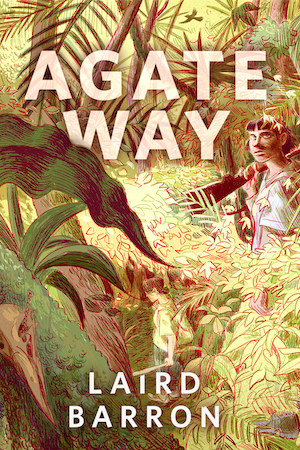







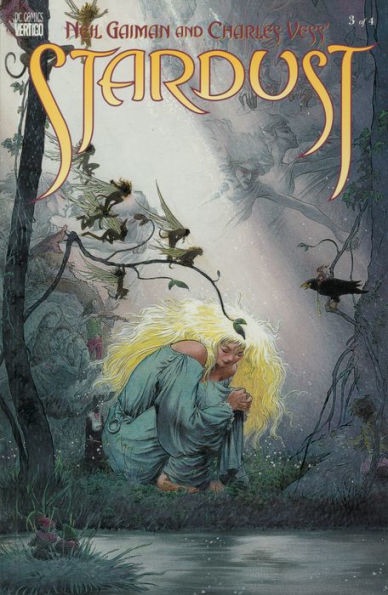
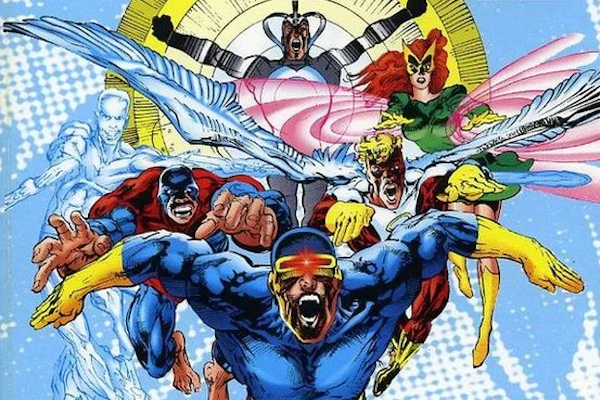
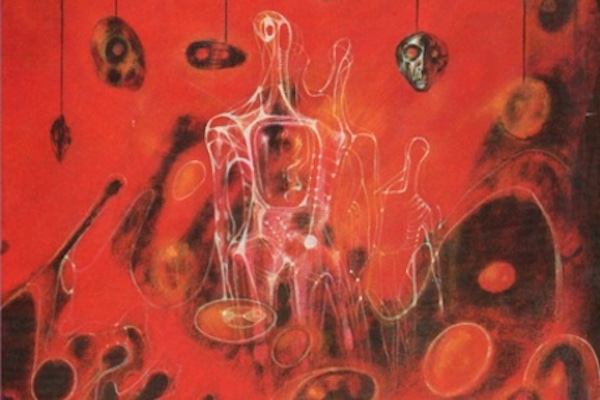
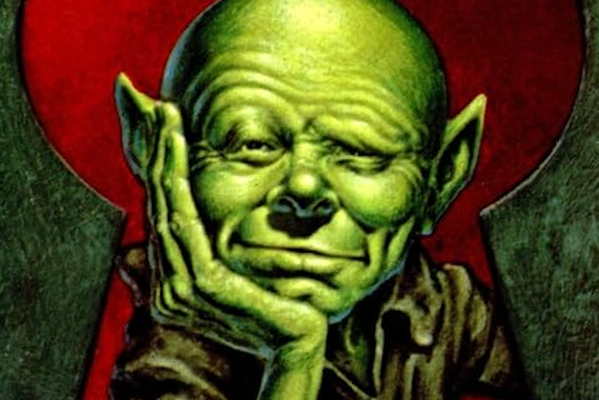
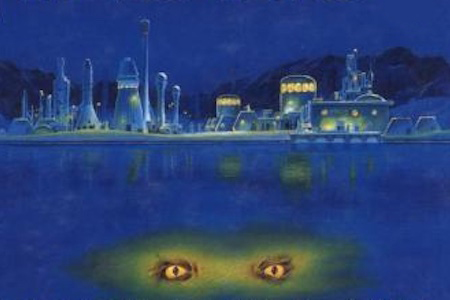
I usually love the Gaiman/Vess collaborations (mostly in Sandman) but I think my personal favourite version of Stardust is the movie. I can still remember Michelle Pfeiffer’s little shimmy in the mirror after all these years haha. It also helps that the movie streamlines the plot somewhat.
I read the book in the summer of 2007 and loved it. Then I saw the movie slightly later in the summer of 2007 and loved it too. Normally I would have raised an eyebrow at the divergences, especially toward the end, but both versions were such darn good storytelling that they worked. The book is slyer and more capricious; the film is more earnest and big-hearted. But I ended up feeling as if both totally did justice to the plot. I’d wondered how Neil Gaiman felt about the movie, and am really pleased to know that it wasn’t at all a situation where he disapproved and/or had no say in it.
(I didn’t notice the second R in ‘Tristran’ until halfway through the book, when I suddenly did quite the double-take.)
I also prefer the movie Stardust to the book Stardust, a rare case.
I appreciate both the book and the film, in different ways; the book has more whimsical touches and extra side characters (notably the hairy little man), while I greatly prefer the film’s more suspenseful climax.
@2: I don’t recall whether I noticed the difference between Tristan and Tristran; I actually first encountered the name as a child in Roger Lancelyn Green’s King Arthur and the Knights of the Round Table, where it was spelled Tristram (which I always found a bit of a tongue-twister).
I never noticed the Tristran/Tristan thing until doing this review, since in the book it is written and in the movie spoken. I imagine someone decided that Tristan was easier to pronounce or something.
The Stardust movie is lovely because it reflects many truly sublime choices (there are a few cringeworthy decisions that get crowded out). One of the movie’s most inspired moments is when Danes’ Star, soldiering on with a whopper of an accent, lectures a transformed Tristan on love. It’s one of those transcendent movie moments where every word tugs at the heart, rings completely true, and is deeply and abjectly silly — all at the very same time. That is what a great book — and some talented contributions — can do for a movie that would otherwise collapse into a mass of good will and interesting bits.
And I think that speech came directly from the book!
‘We allus knew you wuz a flopsie”–says the practical and tolerant pirate crew.
I’ve always loved the book. I enjoy the movie, because it adds some context and roundness to some of the characters that we don’t get from the book (which is rare, it’s usually the other way around). But it lacks a great deal of the pain and texture the book carries. It ends happily and neatly, which was fun. While the book ends with all the bitter sweetness and compromise we know is true of love. There are wounds that never heal, and sacrifices that are made, and enduring both is worth it to live a life like they get to (or so we hope). The latter has stayed with me all the long years since I first read it, and it’s always felt more true. Which is, I think, the real test of a fairy tale.
Oh gosh I never realized the Hempstock family was somewhat recurring in Gaiman’s books!! I remember their members a lot from The Ocean at the End of the Lane (because they have an extensive role there) but I should reread The Graveyard Book (or read Stardust – I only saw the movie) as I feel like it’s a really nice reocurring cameo!
@5: according to Gaiman (Q&A during a lecture tour), no one in the cast could say Tristran without stumbling over it.
I meant to post this earlier, but the captcha wasn’t working and the same problem wouldn’t let me create an account.